#R22R
Text








#R22R Sherman tank#World War I#WWI#travel#original photography#vacation#tourist attraction#landmark#architecture#Battle of the Somme#15 September 1916#Citadelle of Quebec#Québec City#summer 2018#anniversary#military history#engineering#technology#Canada#Québec#Ontario Veterans Memorial by Allan Harding MacKay#Toronto#2015#World War One
0 notes
Photo

Some color experiments with a decorative scene belonging to rule 22R. I think there is still room for improvement... :)
1 note
·
View note
Text
R22R
#view#sky#sunset#beach#sea#run#video#earth views#blue sky#sea view#seaside#videography#video post#amazing videos#running#followforfollow#follow#followback#like4like#clouds#followforafollowback#like#likeforlike#reblog4follow#video vlog#vlog#reblog4like#follow the blog i reblogged this from#reblog4reblog#reblog
145 notes
·
View notes
Text
Free for All - Episode 5: The Stakeout (Part Two: Zatara)
EPISODE FIVE
THE STAKEOUT
CUT TO:
EXTERIOR: OVERWATCH AREA, TOP OF A RIDGE, NIGHT
Sniper team Zatara, on prone and under cover of a “sand blanket”, under the mercy of the storm. It’s not that strong, so no complaints. So far.
They watch an entire Martian convoy. Old P97s, converted utility vehicles. They’ve just formed in a parked circular formation, just like the wagons on the Oregon Trail. So far, they’re just frolicking around, and waiting.
“BLAKE” – SNIPER TEAM REAPER:
(Voice-over over radio)
Affirm on pos’.
Over.
“DEUCE” – SNIPER TEAM VIPER:
(Voice-over over radio)
All teams, this is Viper Alpha.
Entry road’s clear, still no sign of customer.
Over.
“PUMA” stays quiet. Cheek to the side of his M43A1 sniper rifle, and eye toward the scope. 31. He was part of the Italian Army’s Lagunari, where he participated in the two LEONTE operations in Lebanon. Though he stays calm, he has told his comrades, how he hates operating in a dust storm mission.
“PUMA”:
(Keys in to radio)
All teams, this is Zatara Alpha.
Still nothing of interest on the convoy below.
Over.
He wipes off the dirt from his thermal scope, and from his helmet. He doesn’t like this op, at all.
His spotter “TRIP” works the scope. 30. He is from the R22R, the “Van Doos”. He keys in everything in his “notepad device”, which is stacking up dirt.
“TRIP”:
Hey, Pum.
You know what?
“PUMA”:
Yo?
“TRIP”:
When I retire, I might take my kids up here.
Might take them hiking too.
“PUMA”:
On Mars?
“TRIP”:
Yeah, why not?
It’s a beautiful planet.
“PUMA”:
On Tharsis?
“TRIP”:
Why the fuck not?
I did say, “When I retire”.
Right?
“PUMA”:
Point taken.
They return to watching the convoy.
THERMAL IMAGING POV:
Puma shifts from Martian to Martian. 7 counted, so far. They’re all struggling to keep the circular formation in check. Mounted gunners with face masks, check their perimeter from top to bottom. The guys on the ground don’t have it good though. They’re walking around, trying to find a good spot to fully secure their sector.
All while complaining to each other about the storm, and how it’s a bad omen.
“PUMA”:
(Whispers, in Italian)
I feel your pain, you poor bastards.
He keeps scanning the area. He then checks so far toward the rocks. In his sight, a flashing strobe in the thermal view, one of their guys. Prone, and waiting, just like them.
PUMA keeps zooming in and out, just for fun.
“PUMA”:
You believe it?
“TRIP”:Which one?
“PUMA”:
Our Saya, a model.
Right before she joined IDF too.
“TRIP”:
Fuck no, bro.
Not one, fucking bit.
“PUMA”:
Don’t let her hear you say that.
Seriously, Trip, don’t let her.
-END OF EPISODE FIVE, PART TWO.-
#Free for All#Episode 5#The Stakeout#Part Two#Zatara#Bravo Hub 1337 & 5532#F4A#Science Fiction#Action#War#Space
0 notes
Photo
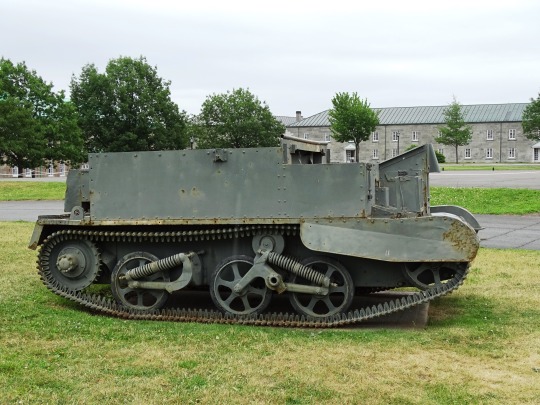
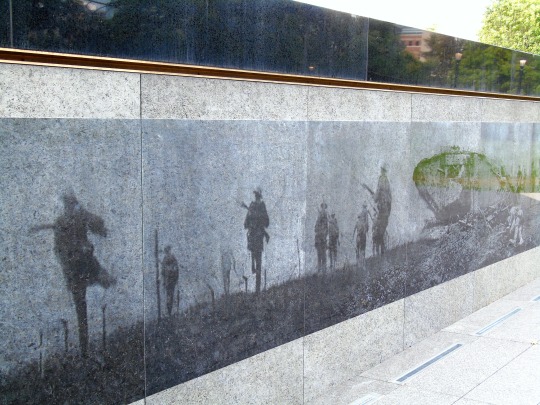
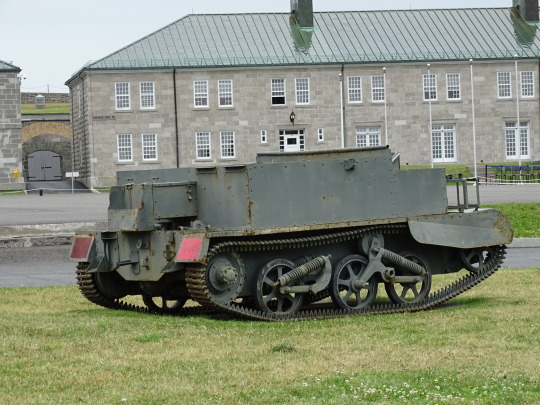


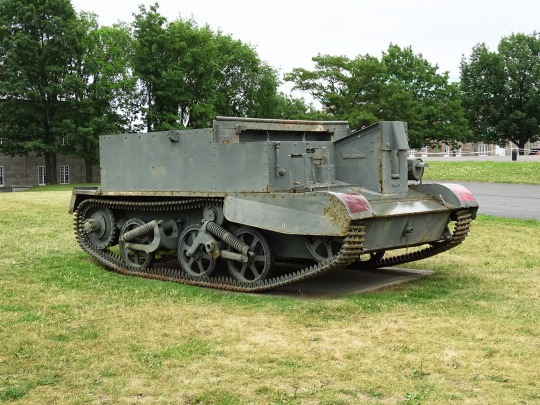


World War I: Tanks were used for the first time in battle, at the Battle of the Somme, on September 15, 1916.
#R22R Sherman tank#World War I#World War One#WWI#tanks#military#used#15 September 1916#anniversary#history#Quebec City#Québec#Ontario Veterans Memorial#Toronto#Ontario#summer 2018#2015#cityscape#architecture#public art#Canada#travel#vacation#Citadelle of Quebec#tourist attraction#landmark#original photography
4 notes
·
View notes
Photo




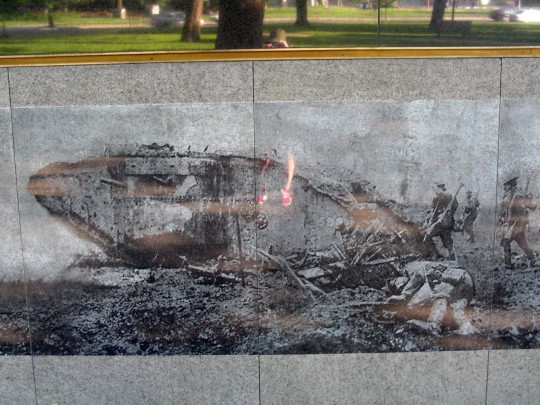



World War I: Tanks were used for the first time in battle, at the Battle of the Somme, on September 15, 1916.
#R22R Sherman tank#World War I#WWI#World War One#Great War#Canada#15 September 1916#anniversary#history#military#summer 2018#original photography#Quebec City#Citadelle of Quebec#architecture#engineering#Québec Citadel#Québec#Ontario Veterans Memorial#Toronto#2015#2009#tourist attraction#landmark
15 notes
·
View notes
Photo


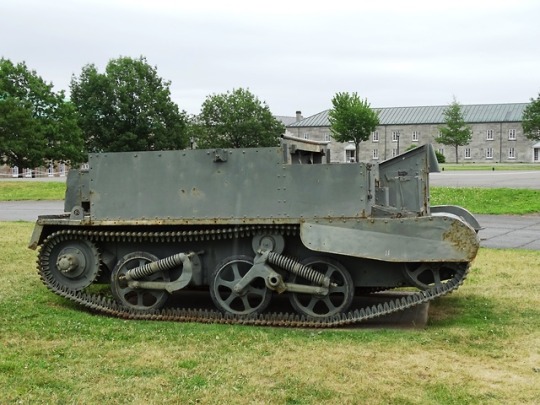


World War I: Tanks were used for the first time in battle, at the Battle of the Somme, on September 15, 1916.
#R22R Sherman tank#World War I#WWI#tanks#Citadelle of Quebec#used for the first time in battle#Battle of the Somme#15 September 1916#anniversary#history#architecture#Québec Citadel#Canada#travel#original photography#summer 2018#landmark#tourist attraction#military
1 note
·
View note
Photo
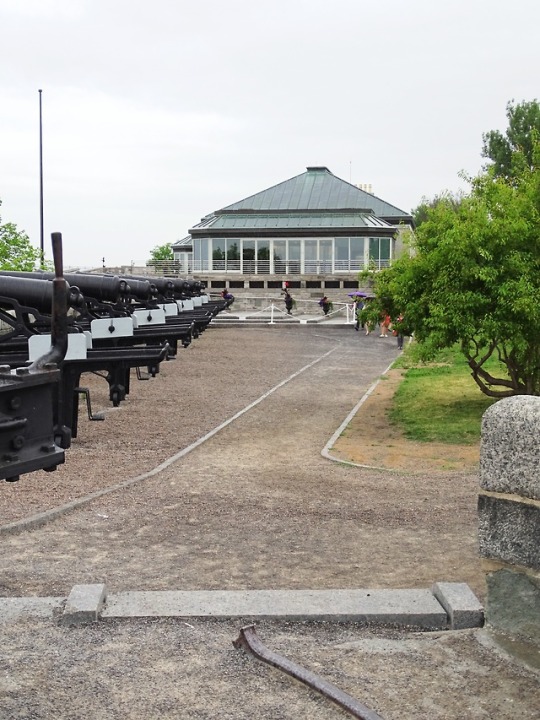



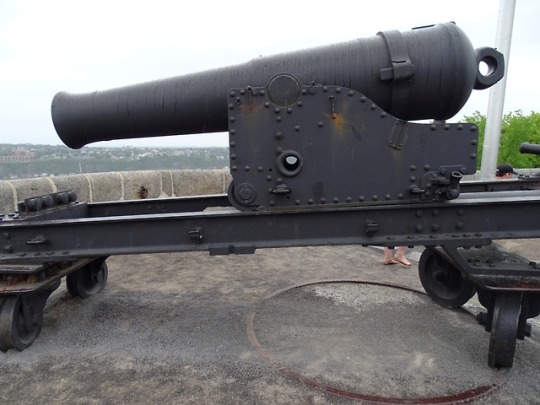

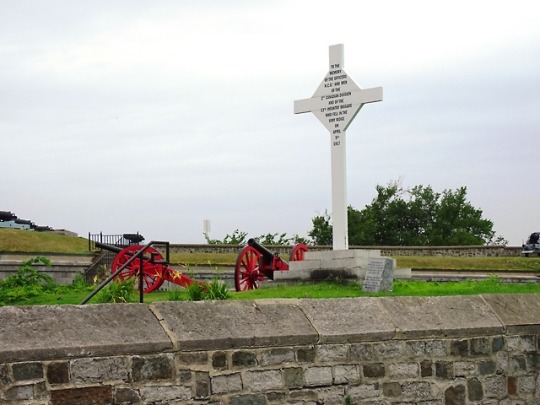
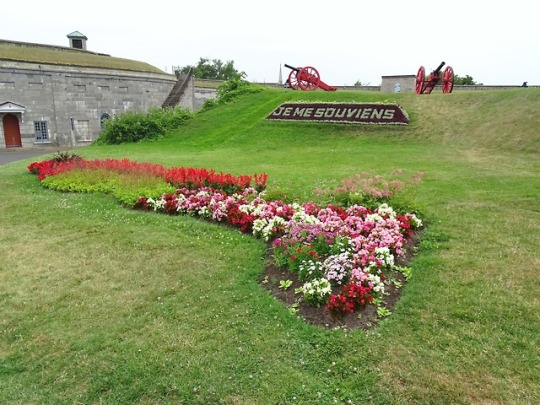
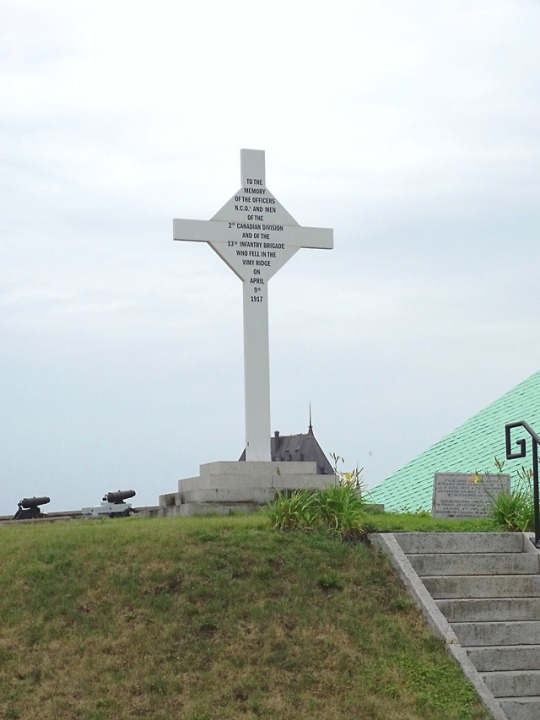

Québec Citadel (No. 7)
Cap Diamant's strategic value was identified by Samuel de Champlain in 1608 and led him to found Quebec City at the base of the escarpment. The promontory was practically insurmountable and thus the only side of the settlement ever to be heavily fortified was the west, the only one not naturally protected by the hill.The first protective wall (enceinte)—Major Provost's palisade—was built by command of Governor General of New France Louis de Buade, sieur de Frontenac and completed just in time for the Battle of Quebec in 1690. Three years later, a plan by engineer Josué Boisberthelot de Beaucours for new, 75 m (246 ft) wide enceinte was developed by the French military engineer Jacques Levasseur de Néré and approved in 1701 by King Louis XIV's Commissary General of Fortifications, Sébastien Le Prestre de Vauban.
The proposal to build a full fort was deemed by the government in France to be too costly, despite both the importance and vulnerability of Quebec City. After the fall of Louisbourg in 1745, considerable work on the battlements took place under the direction of military engineer Gaspard-Joseph Chaussegros de Léry.
The first British Lieutenant Governor of Quebec, General James Murray, saw the weakness of Quebec City's defences (indeed, Murray's post existed precisely because the British had conquered Quebec City four years before Murray's appointment as governor in 1763). He urged the construction of a citadel, but the imperial government at Westminster, like the French before, deemed a large fort to be of little value; a smaller, wooden citadel was built.
During the American Revolutionary War, after seizing Montreal in the autumn of 1775, American rebels, led by General Richard Montgomery and Benedict Arnold, attempted to take Quebec on 31 December. There, Montgomery was killed and Arnold wounded and forced to retreat. The Americans attempted to keep Quebec under siege, but withdrew after the arrival of British reinforcements in the spring of 1776.
As tensions between the United Kingdom and the United States, as well as fears of further rebellion in British North America,grew in the late 18th century, the British reinforced the defences of their colonies according to a plan drawn up in the 1790s by Gother Mann.The ramparts around the Upper Town cliff and four martello towers (still extant) on the Plains of Abraham were completed before 1812. A citadel was a key part of Mann's design, but no fort was built because the cost was deemed prohibitive.That opinion finally shifted following the War of 1812; as part of a wider improvement of Canada's defences coordinated by the Duke of Richmond, then Governor-in-Chief of British North America,the existing star fort was built between 1820 and 1850 under the direction of Lieutenant Colonel Elias Walker Durnford of the Royal Engineers. Intended to secure Quebec City against the Americans and serve as a refuge for the British garrison in the event of attack or rebellion, the Citadelle incorporated a section of the French enceinte of 1745 and the layout was based on Sébastien Le Prestre de Vauban's design for an arms, munitions, and supplies depot, as well as a barracks. That, though, was somewhat of an anachronism by the time of the fort's completion, in comparison to other contemporary European military architecture. Additional buildings were completed in 1850.
After Canadian Confederation in 1867, Canada became responsible for its own defence; the British departed the Citadelle in 1871.Two batteries of the Royal Canadian Artillery were established at the Citadelle and an artillery school was opened in 1871, followed by a cavalry school. Since 1920, the Citadelle has been the home station of the Royal 22e Régiment of the Canadian Forces. From the late 19th century, living conditions for soldiers at the fort gradually improved; canteens were opened and the casemates were made more comfortable.The preservation of much of the fortifications and defences of Quebec is due to the intervention of Governor General of Canada the Marquess of Dufferin and Ava, who also established the Citadelle as a viceregal residence in 1872, reviving a tradition dating to the founding of New France.
The Quebec Conferences of 1943 and 1944, in which Governor General of Canada the Earl of Athlone, Prime Minister of Canada William Lyon Mackenzie King, British Prime Minister Winston Churchill, and US President Franklin D. Roosevelt discussed strategy for World War II, were held at the Citadelle of Quebec.
The Historic Sites and Monuments Board of Canada designated the Citadel as a national historic site in 1946.The fortress was designated as a National Historic Site of Canada in 1980 and, five years later, the Historic District of Old Québec, of which the Citadelle is a part, was placed on UNESCO's list of World Heritage Sites.
Source: Wikipedia
#Québec Citadel#view#hauteville#upper town#architecture#cityscape#original photography#summer 2018#Ancien corps de garde défensif#cannon#R22R Sherman tank#Vimy Ridge Cross#Quebec City#canada#travel#vacation#landmark#tourist attraction#Royal 22nd Regiment#buste#outdoors#Citadelle de Québec
2 notes
·
View notes
Photo
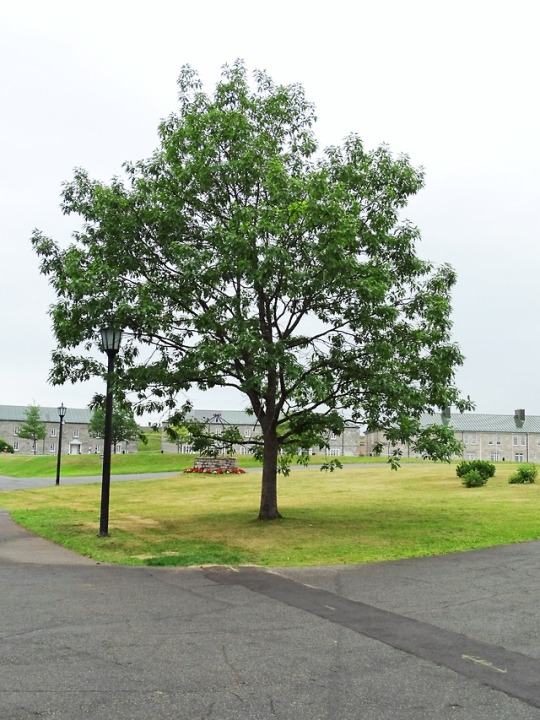

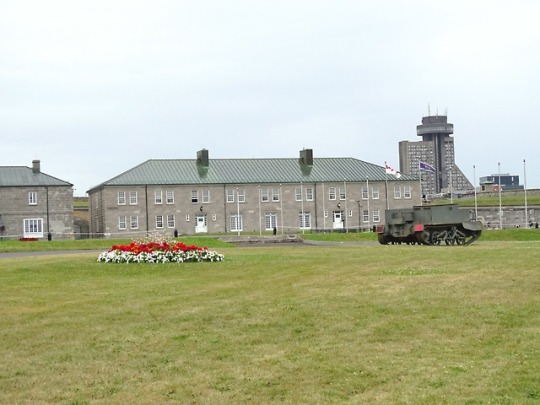

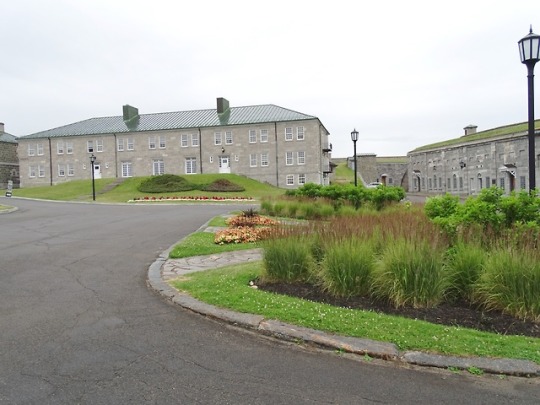
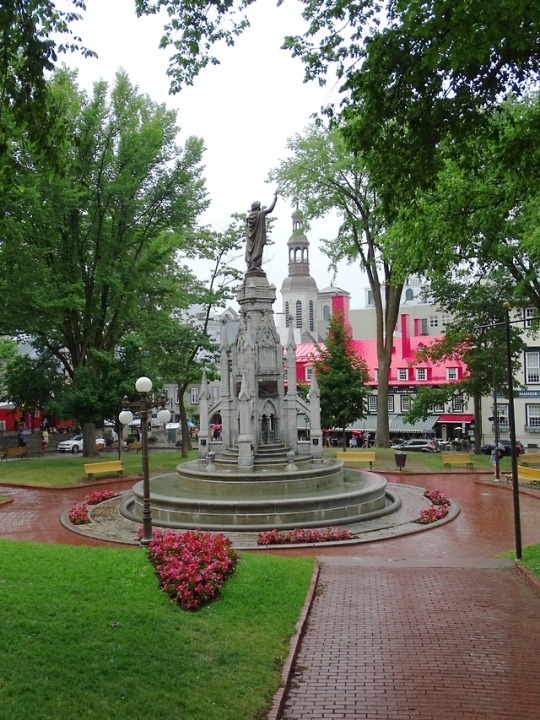




Nature in Quebec City (No. 5)
The proper name of Quebec City is Québec (with an acute accent), in both official languages of Canada (Canadian English and Canadian French alike). This name is used by both the federal and provincial governments. The acute accent differentiates between the official English name of the city, Québec, and the constitutional English name of the Province of Quebec, spelled without any diacritics.
In unofficial English texts, the accent is often dropped and Québec is informally referred to as "Quebec City". In French, names of geographical regions such as provinces and countries are typically preceded by articles whereas city names are not (unless it is part of the name, such as "La Malbaie"). As a result, the province is called le Québec ("in Quebec" = au Québec, "from Quebec" or "of Quebec" = du Québec) while the city remains simply Québec ("in Québec City" = à Québec, "from / of Québec City" = de Québec). Where context requires further differentiation, words such as "la ville de Québec" and "la province du Québec" can be used (taking care not to capitalize the word "ville").
The name of the municipal corporate body instituted to govern Québec is Ville de Québec, in both English and French.This naming convention applies to all municipal corporations in the province (e.g. Ville de Montréal is the corporate body governing Montréal, etc.) Thus, where "Ville de ..." is capitalized, it means the corporate body and it is not part of the toponym (Montréal, Québec), but is the incorporated name of the city. In the English section of Ville de Québec's official website, the city is variously referred to as "Québec" and "Québec City" (with an accent) whereas the corporate body is referred to as "City of Québec".
Residents of Québec are called, in French, Québécois (male) or Québécoise (female). To avoid confusion with Québécois/e meaning an inhabitant of the province, the term Québécois/e de Québec for residents of the city is sometimes used. In English, the terms Quebecer (or Quebecker) and Québécois/e are common.
Also, Quebec City is sometimes referred to as "la capitale nationale" ("the national capital"). The government officially named it this way under the Union Nationale party. The provincial administrative region where the city is situated bears the name Capitale-Nationale (capitalized). The word national is the adjective for the noun nation used in its normal basic sense and refers to Quebec as a nation within the country of Canada, and has no indication of sovereignty.
Source: Wikipedia
#Citadelle of Quebec#original photography#Quebec City#Québec#canada#tree#nature#lawn#flower#architecture#cityscape#landmark#tourist attraction#summer 2018#vacation#travel#R22R Sherman tank#cannon#je me souviens#flower pot#lamp#fleurs-de-lis#regiment canadien francais#Royal 22nd Regiment#Royal 22e Régiment#Place d'Armes#hauteville#upper town#city hall#Monument de la Foi by David Ouellet and Adolphe Garneau
2 notes
·
View notes
Photo

A selection of particles on a simple ether in rule 22R (a.k.a. 104R). Simple ether is my terminology for ether with width=1. This particular ether is very rich; there are many more interesting particles that are not shown here.
It is fascinating to observe that the particles are related to each other, and that collisions seem to “make sense” (in several ways).
0 notes
Photo

A river of simplicity flowing in a complex landscape, under two different filters, in rule 22R.
1 note
·
View note